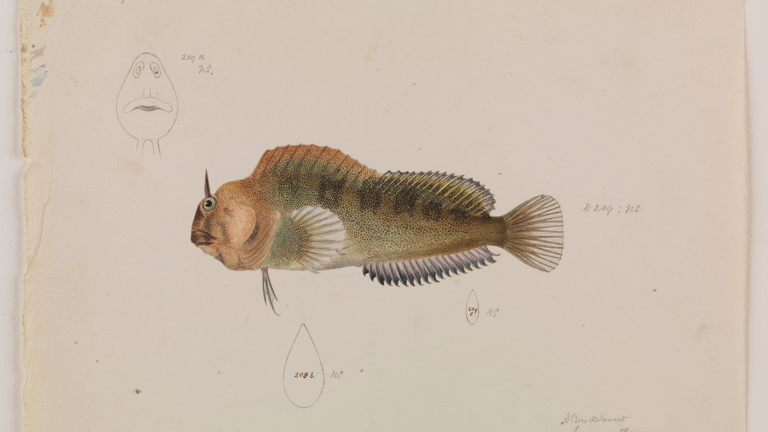
Laboratory Work
While the colony itself was still new, the foundation buildings of the University of Melbourne were created to reverberate with the old world ambience of Oxbridge. Neo-gothic arches and cloistered porticos were built to last, remaining to this day a clear architectural link to the academies of Europe.
Within these thick sandstone walls were McCoy's lecture room and the adjacent laboratory and preparatory room for the Museum. His apartment was diagonally opposite, on the same courtyard, and those who worked and studied in the vicinity must have felt his bustling presence.
The rhythm of laboratory work fluctuated with the yearly pattern of terms and holidays. New research commenced when students were absent, but Arthur Bartholomew's constancy enabled a consistent flow of work.
From dates on drawings of living specimens, the early 1860s were clearly a period of remarkable productivity. Bartholomew's focus was then mostly upon small animals: insects and frogs observed and nurtured through their life stages in the laboratory. His works in this genre are as accomplished as any produced in colonial Australia.
Freelance artists may also have worked in the laboratory, as Bartholomew and Frederick Schoenfeld occasionally drew the same specimens. It appears that both men, from either side of the same smelly table, drew a Common Dolphin, perhaps at the same time. Illustration was usually a solitary business, however, with the artist concentrating on carefully mirroring life's colour and form.
William Kershaw's considered annotations and insect identifications seem to indicate he was often also present in the laboratory, as well as working with taxidermist John Leadbeater in the adjacent preparatory room.
McCoy would have kept a close eye on his staff, directing proceedings and approving completed work. His almost illegible script accompanies many illustrations, and he appears to have taken particular interest in the dissection of freshwater fish, with a series of sketches of their viscera rendered in his characteristic hand.





